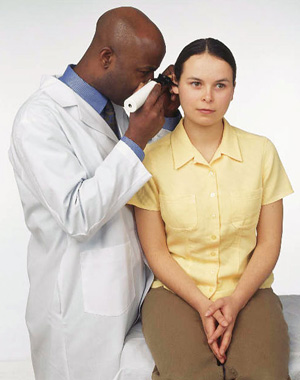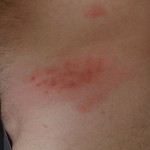 What are Ear Infections?
What are Ear Infections?
There are two types of ear infections, an outer ear infection, and a middle ear infection. The outer ear infection is commonly known as otitis, and swimmer’s ear. Outer ear infection affect the ear canal. This happens when a substance, most notably water enters the canal, and becomes trapped by a buildup of ear wax. This makes for a perfect environment for bacteria to breed.
Middle ear infections also called otitis media, and are the more common type of ear infection of the two. This type of ear infections more common in infants. There is a lot of controversy surrounding the treatment of ear infections with antibiotics. The logic is that antibiotics do not clear up ear infection which are caused by fluid in the ear. Most cases are spontaneously healed, after a certain period of time.There is also a great deal of debate around the use of tubes. Studies show that in only forty two percent of cases ear tube surgeries were an appropriate line of treatment. While the others were possibly premature.
Who Gets Ear Infections?
Ear infection can occur at any age, however they are the most common in early childhood and infancy. It is estimated that more than half of the visits to pediatricians every year in the United States are due to ear infections. Acute ear infections affect two-thirds of children in America under two years old, and chronic ear infections affect nearly two-thirds if children in the United Sates under the age of six.
What are the Symptoms of an Ear Infection?
It is not necessary for all of the following symptoms to be present to make the diagnosis of an ear infection. Pain, and often times throbbing, pressure, or fullness in the ear. As well as pus from the ear. Hearing difficulty in the affected ear, nausea, vomiting, and fever.
What are the Root Causes of Ear Infections?
A buildup of ear wax is a main root cause of ear infections, which is usually caused by the overuse of cotton swabs. Fetal alcohol syndrome, nutritional deficiencies, especially vitamin A, C, an d essential fatty acids. Genetics play a key role in ear infections, Almost sixty percent of children with Down’s syndrome have ear infections. Environmental allergies, smoking, or secondhand smoke, season changes, food allergies, upper respiratory infections, and injuries are all root causes of ear infections.
Natural Remedies.
A healthy diet full of whole grains, and organic fruits, and vegetables is a great place to start. Make sure to drink plenty of water to help thin out mucus secretions. Have your child tested, or go through an elimination diet, to ensure that no food allergies are present, and if there are avoid those foods.
|
|
Garlic Mullein Drops– Place 2 drops of warm drop into the affected ear three times a day. Don’t use garlic drops if the eardrum is perforated, or if there is fluid draining form the ear. Garlic and Mullein have antiviral, antibacterial, and pain-relieving qualities. |
|
|
Echinacea and Goldenseal– Adults take 4 ml and 2 ml for children four times a day, or as directed n the label. These herbs will enhance immune function. |
|
|
Vitamin C– Adults can take 1,000 mg three to four times a day. For children take 500 mg three times a day. If diarrhea occurs reduce that dosage. Vitamin C reduces inflammation, and also helps to boost the immune system. |
|
|
Essential Fatty Acids– You can use flaxseed oil, or fish oil. Take as directed on the label, and look for children’s formulas for kids. Essential fatty acids are good for the prevention of ear infections, and also reduce inflammation. |
*Please check with your doctor before taking any supplements, and also read the warning labels on each product, especially if you are pregnant or breast-feeding. Also read the labels carefully when giving your child any natural supplement, to ensure that it is safe to give a child.









